A Comprehensive Guide to Campgrounds at Yellowstone
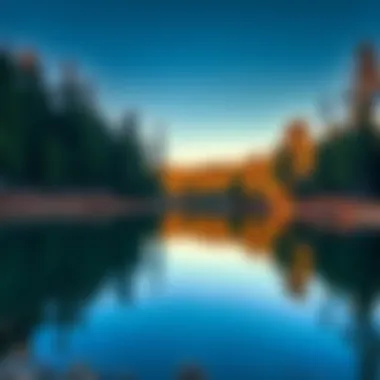
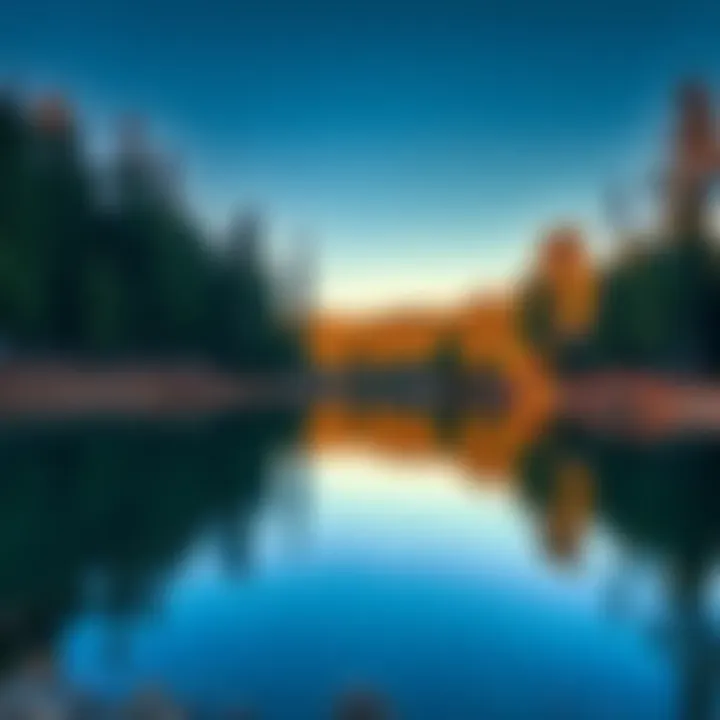
Intro
Yellowstone National Park, famed for its breathtaking beauty and ecological significance, represents one of the last untouched wilderness areas in the United States. Nestled in the mountains of Wyoming, Montana, and Idaho, this expansive park is not only a paradise for outdoor enthusiasts but also a sanctuary for diverse wildlife and vibrant ecosystems. Understanding how to navigate its myriad campgrounds can truly enhance one’s experience while embracing the intricacies of local ecology.
Camping here offers an immeasurable reward, as visitors immerse themselves in nature, but it also comes with a responsibility to respect and protect this unique habitat. Each year, millions flock to Yellowstone, with many camping under the vast sky, evening campfires crackling, while the scent of pine trees lingers in the air. Above all, being mindful of the impact on this pristine environment is of utmost importance for future generations.
In the upcoming sections, we will explore various aspects essential to camping in Yellowstone, emphasizing how campers can technically maximize their visits. We will also delve into the ecological richness of the park, alongside sustainable practices necessary for preserving its beauty and wildlife. After all, understanding the local ecosystems and the proper etiquette while engaging with nature can turn a simple camping trip into a profoundly transformative experience.
Prolusion to Yellowstone Campgrounds
Camping within the borders of Yellowstone National Park is more than just a pastime; it’s an invitation to immerse yourself into the wild heart of nature. The campgrounds here serve as launchpads for exploration, each offering a unique opportunity to connect with the surrounding landscape, wildlife, and, perhaps most importantly, oneself. Whether you’re pitching a tent under the stars or parking your RV within earshot of a flowing river, the experience is undeniably profound.
The Significance of Camping in Yellowstone
Camping in Yellowstone is like stepping back in time, tapping into a tradition that predates modern conveniences. This park, America’s first national park, presents a tapestry of the natural world, where geysers, hot springs, expansive forests, and diverse animals all coexist. The act of camping allows individuals and families to explore these wonders more closely. Late-night campfire conversations accompanied by the distant howls of wolves, waking up to birdsong, or watching the sun kiss the horizon—these are experiences that resonate deeply with visitors.
Overview of Yellowstone National Park
Yellowstone National Park sprawls across approximately 3,472 square miles, a vast expanse that bridges Wyoming, Montana, and Idaho. It’s home to geysers, like the iconic Old Faithful, and rich ecosystems that range from alpine to wetlands. The park is a living laboratory for geothermal activity; it boasts more than half of the world’s active geothermal features. Coupled with its diverse wildlife, including bison, elk, and bears, Yellowstone offers countless opportunities to witness nature in its rawest form. According to the National Park Service, over four million people visit each year, drawn by its breathtaking landscapes and abundant recreational activities.
"Yellowstone isn't just a place; it's an experience that many cherish for a lifetime. "
For those considering a camping trip within Yellowstone, it’s essential to understand both the significance of camping and the unique features of the park. Whether for solitude, family bonding, or an adventure with friends, knowledge about the campgrounds and facilities can make your experience that much more fulfilling and memorable.
In the following sections, we’ll explore the various campground types, popular spots, and essential amenities to aid in crafting an unforgettable trip.
Types of Campgrounds
Understanding the types of campgrounds is crucial for planning a successful adventure in Yellowstone National Park. Each type offers unique experiences, catering to different preferences and comfort levels. This section provides an overview of the various campgrounds so you can choose one that best fits your needs.
Frontcountry Campgrounds
Frontcountry campgrounds are often the first choice for families or those who prefer a more accessible camping experience. These sites lie within easy reach of roads and amenities, making them ideal for visitors who might not be as comfortable in the backcountry. Locations such as Madison Campground or Canyon Campground offer a blend of nature with some conveniences of home.
- Accessibility: Located near main highways, making it easier for all.
- Amenities: Benefits such as restroom facilities, picnic tables, and in some cases, even showers!
- Safety: Being closer to help if you need it, this is great for families with young kids or those unaccustomed to roughing it.
However, do keep in mind that because these campgrounds are popular, they can get crowded during peak seasons. If you’re after a little more peace and quiet, consider making an earlier reservation or visiting during the shoulder seasons.
"Frontcountry camping can provide the best of both worlds: a taste of nature without fully disconnecting from the conveniences of modern life."
Backcountry Campgrounds
For those seeking adventure and solitude, backcountry campgrounds provide an entirely different experience. Typically located further away from road access, these sites require hiking to reach. They are perfect for individuals who value isolation and wish to immerse themselves in Yellowstone’s stunning scenery.
- Seclusion: Since these campgrounds are more remote, you’re likely to encounter fewer people, offering a chance to truly retreat into nature.
- Natural Beauty: Often set near spectacular landscapes, lakes, or along trails where wildlife viewing can be exceptional.
- Challenge: They require a bit of physical effort to get to, making it ideal for seasoned hikers or those looking to break a sweat.
It’s worth noting that when engaging in backcountry camping, preparation is key. Visitors must be aware of their surroundings and equipped for any possible encounters with wildlife. This type of camping often entails stricter regulations regarding food storage and waste disposal to minimize human impact on the environment.
Ultimately, the type of campground chosen will significantly shape your experience at Yellowstone. Whether you prefer the convenience of frontcountry sites or the tranquility of backcountry grounds, each offers a unique opportunity to connect with one of America’s most captivating natural environments.
Popular Campgrounds in Yellowstone
Understanding the popular campgrounds in Yellowstone National Park is essential for anyone looking to immerse themselves in the park's multifaceted nature. These campgrounds serve as gateways to unfathomable landscapes, offering access to dramatic scenery, thermal wonders, and an abundance of wildlife.
Opting for a well-situated campground can enhance your overall experience, granting convenience to nearby attractions and activities. It's also a chance to dive into the essence of Yellowstone. Visitors often engage with the land, forging memories around campfires while sharing tales under a sky spangled with stars. To get the most out of your stay, let’s explore three significant campgrounds: Madison, Canyon, and Bridge Bay.
Madison Campground
Madison Campground is where tranquility meets adventure. Located near the junction of the Madison and Firehole rivers, this campground offers a scenic landscape that is nothing short of captivating. One key aspect of Madison is its accessibility; situated only a few miles from the West Entrance, it provides a prime location for both newcomers and seasoned visitors.
- Amenities: Madison boasts essential facilities including restrooms and potable water. Though it lacks showers, the convenience of nearby attractions compensates for this. The proximity to the famous geysers of the Old Faithful area makes it a favorite spot among visitors.
- Wildlife Watching: The region is renowned for its rich wildlife habitat. Keep an eye out for elk and bison grazing nearby — you might even spot a bear if you are extremely lucky.
- Activities: Anglers appreciate the fishing opportunities here. Both the Madison River and nearby lakes offer excellent fishing experiences. If fishing isn’t your speed, simply the beauty of the area is enough to captivate anyone.
Canyon Campground
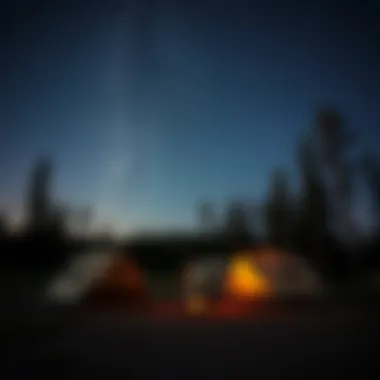
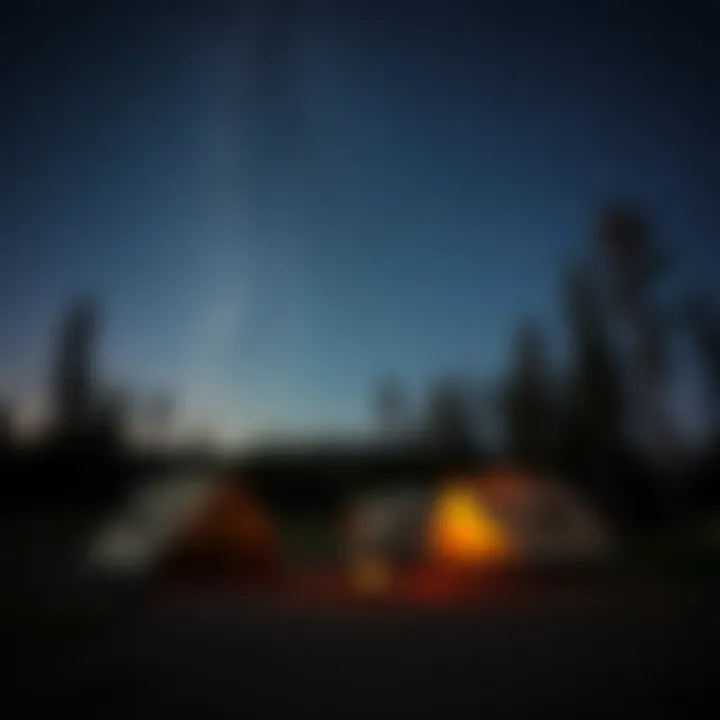
Canyon Campground is another standout spot, set amidst the dramatic cliffs of the Grand Canyon of the Yellowstone. This campground offers more than just breathtaking views; it also serves as a central hub for a variety of hiking trails and geological wonders.
- Surroundings: Guests are immediately treated to views of the impressive canyon, which features stunning geothermal activities. The sounds of the Yellowstone River tumbling over rocks add to the rich atmosphere.
- Facilities: Canyon Campground includes basic facilities like restrooms and drinking water. A pay-showers option is also available nearby, making it easier to wash off the dust after a long hike.
- Activities: The trails around Canyon Campground invite both serious hikers and casual strollers. The popular trails lead to various viewpoints that display the canyon’s stunning color palette, particularly at sunrise and sunset — a sight that can leave one almost speechless.
Bridge Bay Campground
Bridge Bay Campground is tucked away along the eastern shore of Yellowstone Lake, making it an excellent base for exploration. This area is less crowded than some of the other campgrounds, providing a more serene environment.
- Accessibility: The campground’s strategic location features easy accessibility to both hiking trails and fishing areas. Additionally, it’s conveniently close to various amenities, ensuring comfort during your stay.
- Facilities: Bridge Bay offers several restroom facilities and a sewage dump station. Guests can also find a nearby store that sells camping essentials and firewood.
- Stargazing: One of the more enjoyable activities here is stargazing, with minimal light pollution for clear views of the night sky.
As you explore these popular campgrounds, you’ll find that each offers unique advantages suitable for various preferences and interests. Choosing the right one can make all the difference in experiencing the grandeur and unique ecosystem of Yellowstone.
Essential Facilities and Amenities
When venturing into the great outdoors of Yellowstone National Park, understanding the essential facilities and amenities available at the campgrounds can significantly enhance your experience. These resources not only contribute to the convenience and comfort of campers but also play a pivotal role in ensuring safety and hygiene among visitors. Whether you are a seasoned outdoor enthusiast or a first-time camper, knowing what facilities are at your disposal allows you to prepare effectively and enjoy your time in nature without unnecessary stress.
Restroom and Shower Facilities
Clean restroom and shower facilities are vital in any campground, and Yellowstone is no exception. Most campgrounds, particularly those in the frontcountry, offer restrooms equipped with running water and basic sanitation provisions. However, it’s crucial to realize that not all campgrounds will provide showers. For example, the Madison Campground features restrooms with flush toilets but lacks shower facilities. Campers often must strategize around this by planning off-site stops if they desire a shower during their stay.
Regular maintenance and cleanliness of these facilities are essential for a pleasant camping experience. The park staff works diligently to keep them in usable condition, but high foot traffic during peak season can strain resources. It's worth noting that self-sufficient campers sometimes opt for portable solutions, like solar showers, which can greatly alleviate the need for fixed showers.
In addition, visitors should adhere to hygiene practices, such as handwashing at designated sinks or using hand sanitizer to minimize the risk of spreading germs among the community. This is especially necessary given the remote nature of Yellowstone and the reliance on limited facilities.
Campfire Regulations
Campfires can instill a sense of nostalgia and comfort amidst the wild, but they come with a set of rules meant to protect both campers and the fragile ecosystems. Understanding campfire regulations in Yellowstone is not merely a suggestion; it’s a necessity.
Campers must familiarize themselves with the fire policies in place, which can vary significantly based on weather conditions, fire risk levels, and season. During hotter months, for instance, fire bans may be implemented to prevent wildfires, which have become a significant concern in national parks. Always check with current park advisories before planning a campfire.
Permitted campfires are typically only allowed in designated areas and must be contained within fire rings provided by the campgrounds. It's crucial to never leave a campfire unattended and to fully extinguish it before heading to bed or leaving the site. This not only protects the surrounding wilderness but also reduces the risk of accidents.
Here are some key considerations regarding campfire policies:
- Use of firewood: Collecting firewood within the park is generally prohibited. Campers should buy or bring their own seasoned firewood to minimize pest introduction.
- Cooking versus campfires: Understand the difference between having a campfire for warmth and cooking; some facilities provide stoves or grills.
- Fire safety kits: Keeping a fire extinguisher, shovel, and plenty of water nearby is always a good practice.
"The beauty of a campfire is not in the flames alone but in the conversation, tales of wonder, and shared experiences it invites."
Being aware of and following the campfire regulations laid out will allow visitors to enjoy their fires while respecting the park's environment and its many inhabitants. It is the delicate balancing act between enjoying nature and protecting it that every camper should aim to accomplish.
Reservation and Booking Procedures
Navigating the reservation landscape is crucial for a successful camping trip in Yellowstone National Park. Advanced planning allows visitors to secure their preferred camping spots, particularly in the busier months of summer. Given the park's immense popularity, having a clear grasp on the booking process can transform the experience from stressful to enjoyable.
When looking to camp in Yellowstone, understanding the reservation system is essential. Most campgrounds operate on a first-come, first-served basis, while others require reservations which can be made online.
How to Secure a Campsite
The first step in securing a campsite is to identify the campgrounds that align with what you're looking for—be it proximity to attractions, desired amenities, or preferred style of camping. The National Park Service's official website provides a wealth of information on available campgrounds, including their capacities and availability.
- Online Reservations: The simplest way to secure a site is through the online reservation system found at Recreation.gov. It allows you to check availability and make bookings up to six months in advance.
- Phone Reservations: If online booking isn't your cup of tea, consider calling the central reservation system. This can be particularly useful if you have specific questions about site availability or campground amenities.
- Arrival Timing: Arriving early, especially during peak season, can be beneficial for obtaining sites that are available on a first-come, first-served basis.
A good rule of thumb? Aim to arrive as early as possible during the day, to maximize your chances of snagging a prime spot.
Cancellation Policies
Understanding cancellation policies is just as vital as knowing how to book a site. Each campground may have its own set of rules, and failure to adhere to these can result in lost fees—money that could be better spent on s'mores ingredients or a nice cold drink.
- General Policy: Typically, cancellations made at least 48 hours in advance will allow you to receive a full refund, minus any reservation fees.
- Late Cancellations: If you find yourself in a pinch and need to cancel within that two-day window, be prepared to lose your deposit. Circumstances can always change, so take note of these penalty clauses when you make your reservation.
- Before You Book: Take a moment to familiarize yourself with specific campground cancellation policies to prevent unwanted surprises down the line. Each campground may display its own conditions clearly, often found during the reservation process.
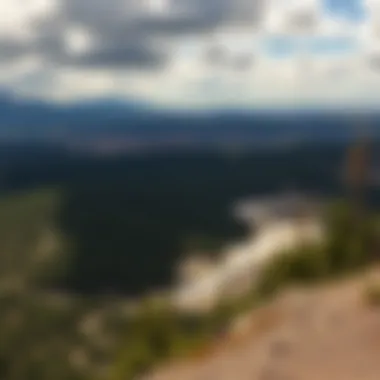
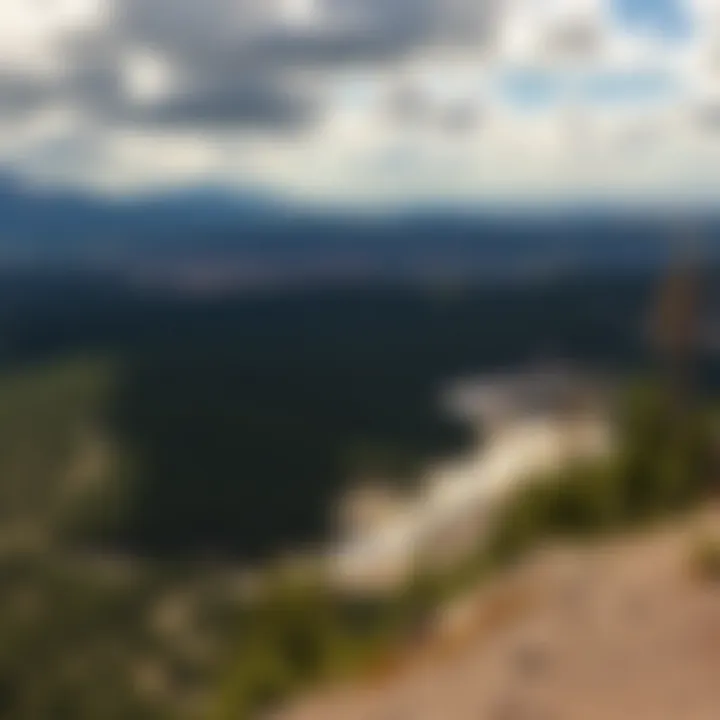
"Planning ahead and understanding the fine print can save you stress later on. A little effort upfront goes a long way—especially in a place as beautiful as Yellowstone."
By navigating the reservation and booking procedures with diligence, you can ensure that your camping experience is more about soaking in the majestic landscapes and less about scrambling for a campsite when you arrive. As you plan your trip, keep in mind that a prepared camper is a happy camper.
Seasons and Weather Considerations
Understanding the seasons and weather patterns in Yellowstone National Park is crucial for anyone planning to camp there. The park's vast landscape creates microclimates that can affect temperatures, precipitation, and overall camping experiences. This variability requires campers to be both adaptable and well-prepared, ensuring not just comfort but safety in the face of unpredictable conditions.
Summer Camping Experience
The summer season in Yellowstone is a time of breathtaking beauty, with the park teeming with life. Visitors can expect daytime temperatures typically ranging from the mid-70s to mid-80s Fahrenheit (around 24 to 30 degrees Celsius), making it the perfect backdrop for outdoor activities. The longest days of the year also mean ample opportunities to explore the stunning vistas and diverse wildlife.
However, even during these warm months, conditions can change at the drop of a hat.
- Afternoon Thunderstorms: These are relatively common, with potential for sudden downpours. Being prepared with waterproof gear can turn a drenching into a memorable adventure rather than a wet one.
- Wildlife Activity: Summer is prime time for animal sightings as bears are foraging, bison are calving, and elk are more visible. Carrying field guides can enhance the experience while promoting respectful observation of these magnificent creatures.
- Visitor Crowds: July and August attract the largest crowds. Early mornings or late afternoons might be your best bet to experience the park with fewer people around.
Ultimately, summer camping in Yellowstone offers a balance between mild weather and breathtaking natural beauty, making it undoubtedly the most popular season for campers. Just remember, a bit of caution and preparation goes a long way.
Winter Camping Challenges
When winter blankets Yellowstone, the park transforms into a serene, pristine wonderland. While the idea might seem appealing, winter camping presents a unique set of challenges that requires thorough preparation.
- Extreme Temperatures: Winter nights can drop below zero Fahrenheit, often making regular camping gear inadequate. Campers must invest in specialized equipment, including four-season tents and insulated sleeping bags to maintain warmth during the frigid nights.
- Navigating the Snow: Snow-covered trails can make hiking a challenging endeavor. Snowshoes or cross-country skis become essential tools for traversing the park's winter trails, opening up slices of solitude away from the beaten path.
- Wildlife Behavior: Many animals are hibernating, but one mustn't forget about bears, who occasionally wake. It’s crucial to be informed about the wildlife that may still be active and to keep bear spray accessible.
- Skiing and Snowboarding: While the park is less accessible for standard camping activities, winter offers unique pleasures, such as snowmobiling and skiing, with specific regulations applying. Engaging in these activities provide a whole new perspective of the park.
Thus, winter camping can be as rewarding as it is challenging. Those seeking to embrace the tranquility of Yellowstone in the winter must plan meticulously and respect the power of nature in its coldest, most beautiful form.
"Camping in Yellowstone is not just about setting up a tent; it's about embracing the elements and understanding the land's beauty and challenges across all seasons."
For more on seasonal considerations, check out the official Yellowstone National Park service website: nps.gov/yell.
It’s worth delving into the local climate demographic too, which can be found extensively detailed at wikipedia.com/YellClim.
Whether you choose the vibrant summer or the silent beauty of winter, the unique seasons of Yellowstone promise experiences that linger in memory far beyond the tent walls.
Wildlife and Safety Guidelines
When planning a trip to Yellowstone National Park, understanding wildlife and safety guidelines isn't just a suggestion—it's a necessity. This is a diverse ecosystem teeming with various species, each with its own behavior and habitats. Visitors who arm themselves with knowledge can enjoy the beauty of nature while minimizing risks to themselves and the animals. Knowing how to handle encounters with wildlife and adhere to safety procedures can enhance the camping experience significantly.
Encountering Wildlife
The thrill of seeing wildlife in their natural habitat is a key reason many people flock to Yellowstone. However, it’s essential to remember that these creatures are exactly that—wild. Adopting a respectful demeanor towards their environment is paramount. Here are a few critical points to keep in mind:
- Maintain Distance: It’s easy to get caught up in the excitement of a close encounter with a bison or elk, but it’s crucial to maintain at least 100 yards (about the length of a football field) away from bears and wolves, and 25 yards from all other wildlife.
- Observe Without Interference: Bring binoculars or a camera with a zoom lens to observe these magnificent animals without encroaching on their space. Attempting to feed or call out to animals is not only dangerous but also harmful to the wildlife.
- Be Aware of Behavior: An animal’s body language can tell you a lot. For example, if an animal is snorting and stomping, it might feel threatened. In such cases, quietly back away. Respecting their territory helps ensure both human and animal safety.
"Understanding wildlife is as much about learning their cues as it is about relishing their company."
Bear Safety Procedures
Bears are among the most iconic yet potentially dangerous residents of Yellowstone. Knowing how to stay safe in bear country can significantly enhance one's camping experience. Here's what to consider:
- Bear-proof Storage: Always use bear-proof containers provided at campsites for storing food, toiletries, and anything that may emit a scent. Even items like toothpaste and sunscreen can attract bears.
- What to Do in an Encounter: If you come face-to-face with a bear, don’t run. Instead, remain calm, back away slowly, and keep an eye on the bear. If a bear approaches aggressively, stand your ground, speak firmly, and raise your arms to appear larger.
- Educate Yourself: Consider attending a bear safety seminar if available, or reviewing the information provided by the National Park Service. Knowing the difference between a black bear and a grizzly bear is essential, as they require different responses in the event of an encounter.
In summary, both the thrill of wildlife sighting and understanding necessary safety protocols go hand in hand. Yellowstone's wilderness is a remarkable place, and with the right knowledge, visitors can revel in its wonders while ensuring the safety of themselves and the wildlife they admire.
For further information about wildlife and safety in the park, visit National Park Service or Yellowstone Wildlife Guidelines.
Environmental Considerations
Understanding the environmental considerations associated with camping in Yellowstone National Park is essential for preserving the park's delicate ecosystems. These considerations encompass a variety of principles and practices which, when followed diligently, can ensure that the impact on the environment is minimized. As nature enthusiasts venture into this breathtaking natural landscape, awareness of their ecological footprint plays a crucial role not only in maintaining the beauty of Yellowstone but also in protecting its diverse habitats for future generations.
Leave No Trace Principles
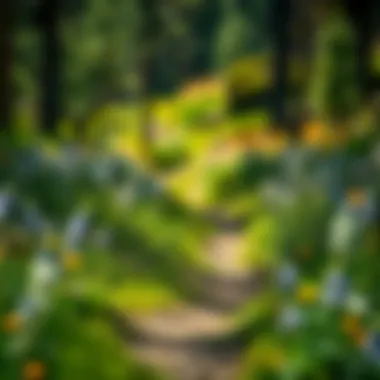

The Leave No Trace principles serve as ethical guidelines for outdoor activities, including camping. These seven principles guide campers to make choices that positively affect the environment. Engaging with these principles is akin to an unspoken pact between outdoor enthusiasts and the wilderness; they stand as a promise to cherish, respect, and protect the integrity of nature. Here are the core principles:
- Plan Ahead and Prepare: Familiarize yourself with the campground rules and the terrain to enhance safety and enjoyment.
- Travel and Camp on Durable Surfaces: Stick to established trails and campsites to minimize soil erosion and vegetation damage.
- Dispose of Waste Properly: Pack out all trash, leftover food, and personal items to keep the area clean and minimize wildlife interactions.
- Leave What You Find: Preserve the natural and cultural features of the park; taking rocks, plants, or historic artifacts harms local biodiversity and heritage.
- Minimize Campfire Impact: Use a stove for cooking, and if having a campfire is necessary, keep it small and use existing fire rings to prevent further scarification of the landscape.
- Respect Wildlife: Observe animals from a distance, and never feed or approach them; this ensures natural behaviors continue without human interference.
- Be Considerate of Other Visitors: Maintain the tranquility of the park by keeping noise levels down and ensuring you're considerate of others' experiences.
By adhering to these principles, campers can enjoy their time in Yellowstone, while also playing a pivotal role in preserving the park's ecology.
Impact of Camping on Ecosystems
The impact of camping on ecosystems is multifaceted, often extending beyond immediate surroundings to affect broader environmental factors. As visitors engage with nature, their actions can either enhance or degrade the surrounding habitats.
- Soil Compaction and Erosion: Frequent foot traffic and vehicle movement can lead to soil compression, disrupting the natural layers and hindering plant growth. Over time, this can enhance erosion, leading to sediment runoff into nearby water bodies.
- Vegetation Damage: Setting up camps in undesignated areas may result in trampling native plants, which may not recover easily, leading to long-term changes in plant community composition.
- Wildlife Disruption: Human activities can disturb local wildlife, altering breeding and feeding patterns. Animals might flee from populated areas, leading to decreased populations in heavily trafficked locations. Observational wildlife experiences can be negatively affected, altering how these animals interact with their habitat.
- Pollution: Improper disposal of waste can lead to water contamination from chemicals or microplastics, adversely affecting both flora and fauna. Moreover, sounds from generators or voices may disrupt sensitive wildlife communication and behaviors.
Ultimately, responsible camping practices are not just about enjoying the moment but also about fostering a sustainable future for Yellowstone's rich ecosystems. Nurturing these principles allows the park's natural inhabitants and features to thrive alongside human visitors.
"Preserving nature is not merely a choice but a responsibility that is entrusted to us by those who will follow in our footsteps."
By integrating conscientious camping practices with an understanding of ecological impacts, individuals can greatly contribute to the protection and health of Yellowstone's exceptional environment.
For further information, you can check Leave No Trace or visit the National Park Service website at nps.gov.
Additionally, you may find useful resources on ecosystems and their preservation through Britannica and Wikipedia.
Engaging deeply with these considerations can elevate the outdoor experience while ensuring that future generations of campers can also relish the wonders that Yellowstone offers.
Activities and Attractions Nearby
Exploring the great outdoors at Yellowstone National Park isn't limited to just the serene experience of camping. The park boasts a treasure trove of activities and attractions that can enrich your stay and showcase its natural beauty. Engaging in various pursuits not only adds layers to your camping experience but also allows visitors to appreciate the park's diverse ecosystems and wildlife. Knowing what activities are available is crucial for planning a fulfilling visit.
Hiking Trails and Nature Walks
One of the most rewarding ways to absorb the grandeur of Yellowstone is through its hiking trails. The park offers a plethora of trails, ranging from leisurely strolls to challenging treks that cater to all skill levels.
- Popular Trails: Trails such as the Mount Washburn Trail provide stunning panoramic views, while the Fairy Falls Trail takes you to a breathtaking waterfall that leaves many in awe. For those who prefer shorter hikes, the West Thumb Geyser Basin loop offers a gentle pathway that meanders through geothermal features.
- Trail Features: Each trail is marked with difficulty levels and distance, often accompanied by informative signs that detail the flora and fauna in the vicinity, providing hikers with an engaging educational experience as they immerse themselves in nature.
- Considerations: It’s wise to be aware of the varying weather conditions that can suddenly shift, especially at higher elevations. Make sure you wear suitable footwear and carry adequate water. As the saying goes, "Better safe than sorry!"
Fishing Opportunities
Fishing in Yellowstone is not merely a hobby; it’s a rite of passage for many visitors. The park is home to numerous rivers, lakes, and streams teeming with fish.
- Species Available: You can find native cutthroat trout, along with rainbow and brown trout, offering a robust challenge for anglers. Local regulations emphasize the preservation of the native cutthroat population, ensuring the ecosystem remains balanced.
- Locations to Cast a Line:
- Permits: Remember, fishing in the park requires a permit, which can be acquired at park entrances or visitor centers. Additionally, comply with local regulations regarding seasons and catch limits to maintain respect for the park’s ecological integrity.
- Yellowstone Lake is a popular choice for those seeking larger catches.
- The Madison River is renowned for its steady flows and scenic backdrop, perfect for those who enjoy fly fishing.
Taking full advantage of the activities and attractions nearby not only enhances your camping experience but deepens your connection with the majestic beauty of Yellowstone. As the old adage goes, "The more you know, the more you grow," which certainly rings true for adventurers traversing this remarkable landscape.
The End and Final Thoughts
As we draw the curtain on this comprehensive guide, it’s essential to underscore the intricate tapestry that camping in Yellowstone National Park weaves. Beyond just a place to pitch a tent, Yellowstone offers a unique convergence of adventure and tranquility, making it vital for both seasoned campers and neophytes alike. The significance of engaging with the natural world cannot be overstated; it brings individuals closer to the Earth, urging them to recognize their role within these ecosystems.
Camping here isn’t merely an escape from the daily grind; it’s a chance to connect, whether with family, friends, or oneself. The memories formed in these campgrounds — the crackling campfires under a star-strewn sky or the serenity of dawn breaking over the mountains — often linger long after the tents are packed up.
Additionally, understanding the various campgrounds and facilities available, along with their specific amenities, enhances the camping experience significantly. The insights into wildlife safety, environmental considerations, and local regulations pave the way for a sustainable adventure, ensuring that the beauty of Yellowstone remains unmarred for future visitors.
Moreover, it’s important to recognize the diverse activities readily available once the sun sets on the camp day. The nearby hiking trails, fishing spots, and other attractions allow visitors to fully immerse themselves in the grandeur of the wilderness. *
"Nature is not a place to visit. It is home."
— Gary Snyder
In reflection, the expedition into Yellowstone’s campgrounds is one of discovery—of breathtaking landscapes, unique wildlife, and personal peace. As you plan your next adventure, remember to tread lightly, respect the space and its inhabitants, and relish in the fact that you’re part of something much larger than yourself. Ultimately, camping at Yellowstone transcends mere escape; it nurtures a bond between the individual and nature, rooted in respect, curiosity, and hope for the future.
Reflecting on the Camping Experience in Yellowstone
Understanding the profound effects of camping in Yellowstone invites introspection—not just about the scenery, but also about how individuals transform in such environments. For many, these experiences rekindle lost connections with nature that modern life often obscures. The vast open spaces, the chorus of wildlife, and the vibrant colors of the landscape invite deep reflection and appreciation.
It’s worth noting that the challenges faced during camping—like sudden weather changes or unexpected encounters with wildlife—often lead to growth. Troubling moments can teach critical skills, such as problem-solving and adaptability.
This kind of engagement breaks the monotony of daily life, encouraging a person to embrace the raw beauty around them and face uncertainties with courage.
Additional benefits include rekindling social ties and creating new friendships. Sharing stories around a campfire fosters deeper bonds, allowing individuals to share experiences and wisdom gained through the outdoors.
In summation, the experience of camping in Yellowstone is as much about the connection to the environment as it is about personal journeys. Whether it’s a moment of solitude in the woods or laughter shared beneath the stars, these elements intertwine to form a rich narrative of growth, understanding, and appreciation for the natural world.















